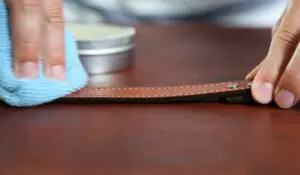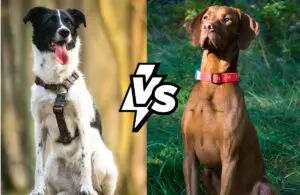Dog collars are about more than just vanity; they serve an important role in your dog’s training and help with identification — they also keep him safe! While the old collars of yesterday were more about containment and vanity, today’s are designed with pet parents in mind.
The most important thing about a dog collar, no matter what type it is, is that you achieve the right fit. That means the collar isn’t too tight or loose because both could pose potential hazards.
In order to ensure your dog’s collar has the right fit, it’s important to first buy the right size and, second, make the right adjustments the first time you put it on. But bear in mind, even though you may have it sized correctly when you put it on, collars will need consistent checking and, sometimes, adjusting.
If you’re wondering how tight should a dog collar be and what the appropriate sizes are for your dog, read on.
How to Adjust a Dog Collar
Adjusting a dog’s collar is a relatively simple process, though if you’re trying a brand-new type of collar, you might find that first fitting a little challenging. Here are three tips to ensure you get the best fit:
Proper Measurement of Dog’s Neck
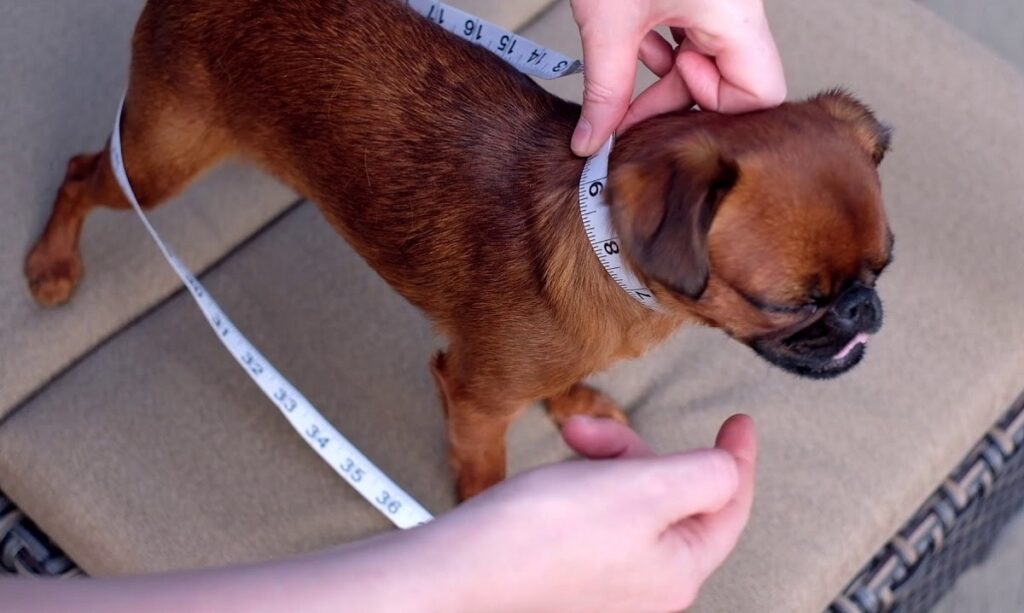
Properly measuring the dog’s neck is important because it helps you pick the right size collar. If you purchase one online, instead of taking your pet to the store where you can try them on, you’ll need to know the circumference of your dog’s neck.
To get proper measurements, use a flexible measuring tape and measure the area just above your dog’s shoulders. This is the area where the collar will sit and is typically wider than the top of the neck. Make sure you leave enough room that you can fit two fingers between the tape and your dog’s neck.
If you don’t have a measuring tape available, a string or ribbon will do. Follow the same simple steps as above and cut the material when it’s the appropriate fit, and measure on a hard ruler.
Adjusting Collar's Fit
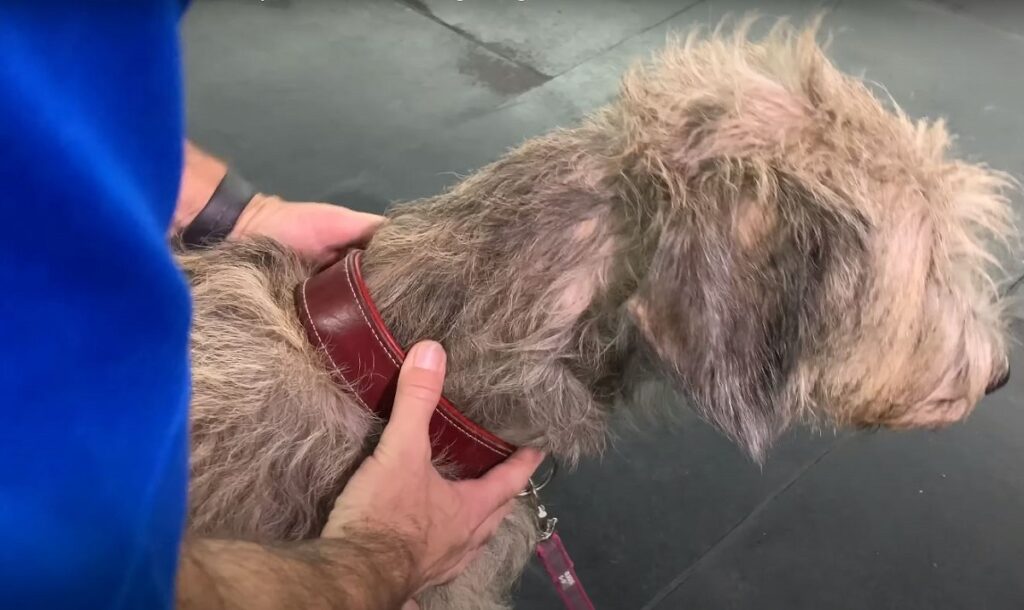
Once you have the new collar in hand, you’ll notice a few different closure types, including plastic or metal buckles, snaps, and slides. Leather collars typically have buckles and a few holes for a prong to fit through. Just choose the appropriate hole to fit the prong through while keeping the two-finger rule in mind. In some cases, you may need to use a hot metal tool to add another hole.
Most collars that have a plastic buckle or plastic snap typically have a sliding mechanism that makes the collar adjustable. Just fit the material through the appropriate side and pull so it’s snug through the mechanism.
Check Regularly
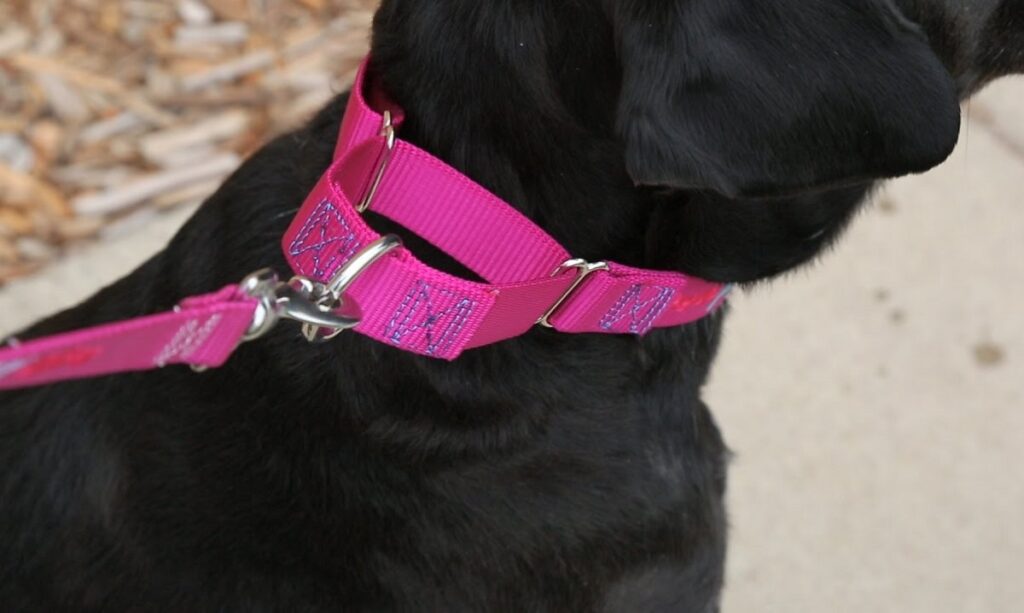
Like humans, dogs can gain or lose weight. Or if you have a puppy, you’ll notice just how fast they grow. All of these changes can result in your dog’s collar needing an adjustment. I check my dog’s collar daily when I pet him. Simply give it a little tug to see how it sits on the dog’s neck, and make sure you can slip two fingers inside the collar, which is the ideal fit.
Dog Collar Sizing Chart

Ways to Determine If Your Dog's Collar Isn’t the Right Fit
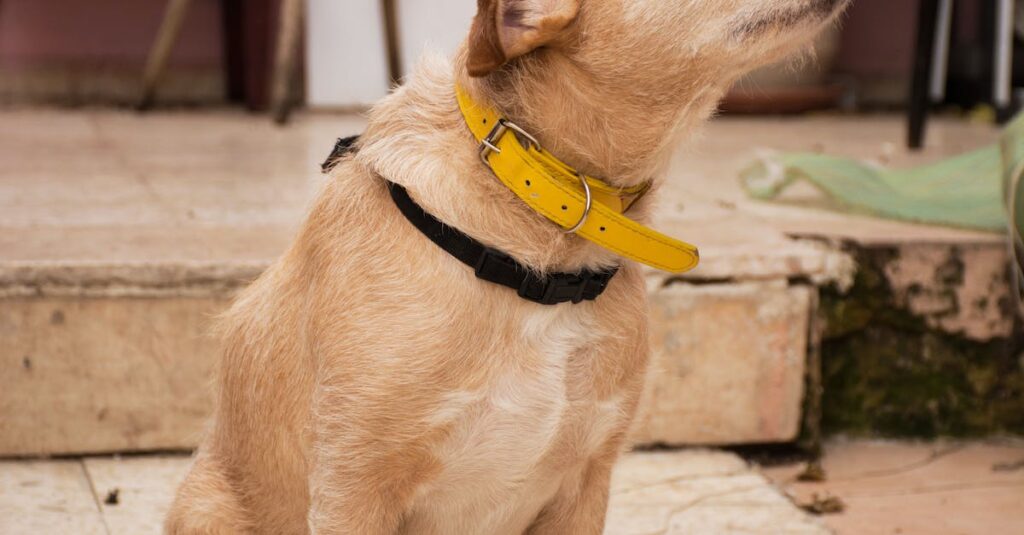
While you may not be able to always tell if your dog’s collar is too tight at a glance, there are some noticeable signs that you need to adjust the sizing. Here are just a few to look out for:
Dog Seems Uncomfortable
If your pet seems like he or she is uncomfortable, that’s a sign that you, as a dog owner, need to check on your furry friend and eliminate any physical elements that might be causing the discomfort. The culprit could be a dog collar that is too snug. In this instance, it’s an easy fix – just loosen it up slightly.
Red or Itchy Skin
Dog owners who notice that their pet has red or itchy skin should immediately try to pinpoint the cause. Several things can cause this reaction, including a bug bite, allergy, or a collar that’s too tight.
Difficulty Breathing
A pup who has difficulty breathing may have a collar that is pressing against the airway, and this can be extremely dangerous. Don’t try to adjust the collar while it’s on your pet; quickly take it off and see if that is causing the breathing issues. If so, you can easily solve the problem by loosening the collar.
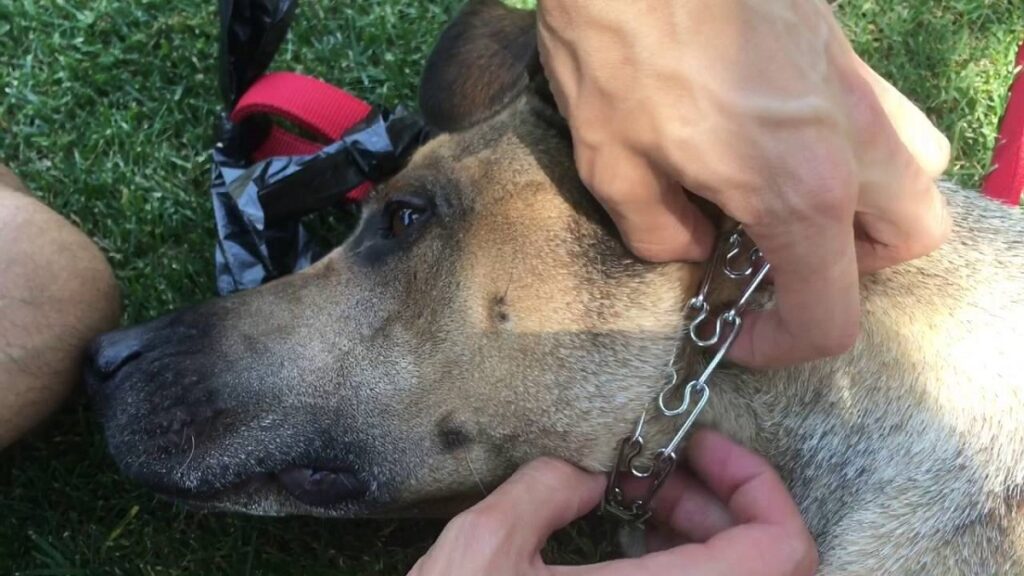
Limited Dog Movement
As a general rule, when dogs are uncomfortable, they move as little as possible. This means if a collar is too tight and it’ll cause discomfort, your furry friend may just stop moving or move minimally to prevent the discomfort from taking hold. If removing the collar doesn’t improve your pet’s disposition, make an appointment to ensure they’re healthy.
The Two-Finger Rule
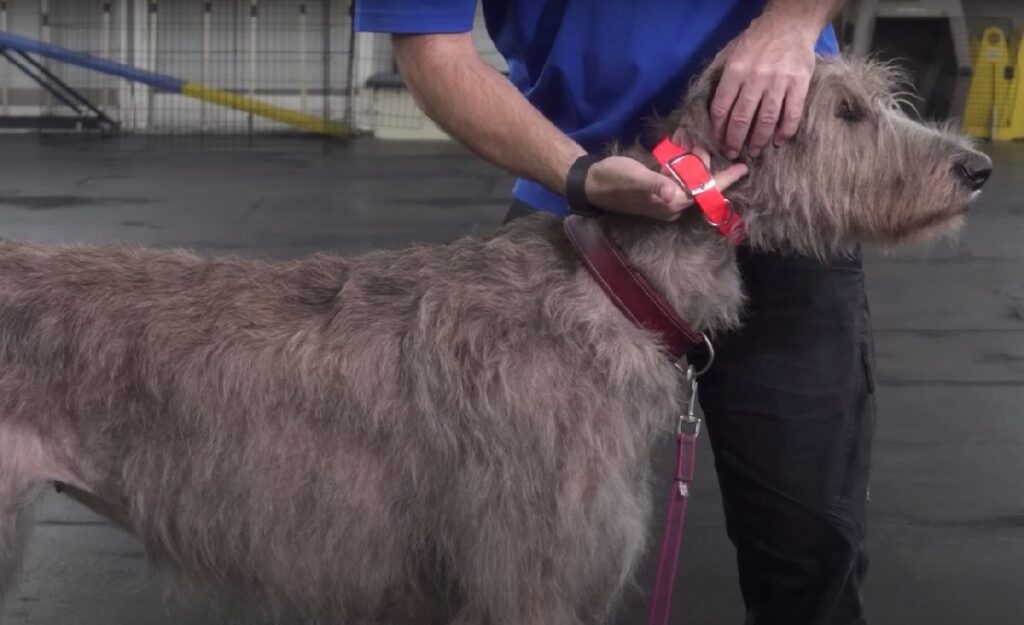
The two-finger rule is your guide to knowing when you’ve achieved a proper fit. Most people use their pointer and middle finger to test, but any two fingers will do. The idea is to keep it just loose enough that it doesn’t choke them but tight enough that they don’t slip out of it.
How to Loosen a Dog Collar
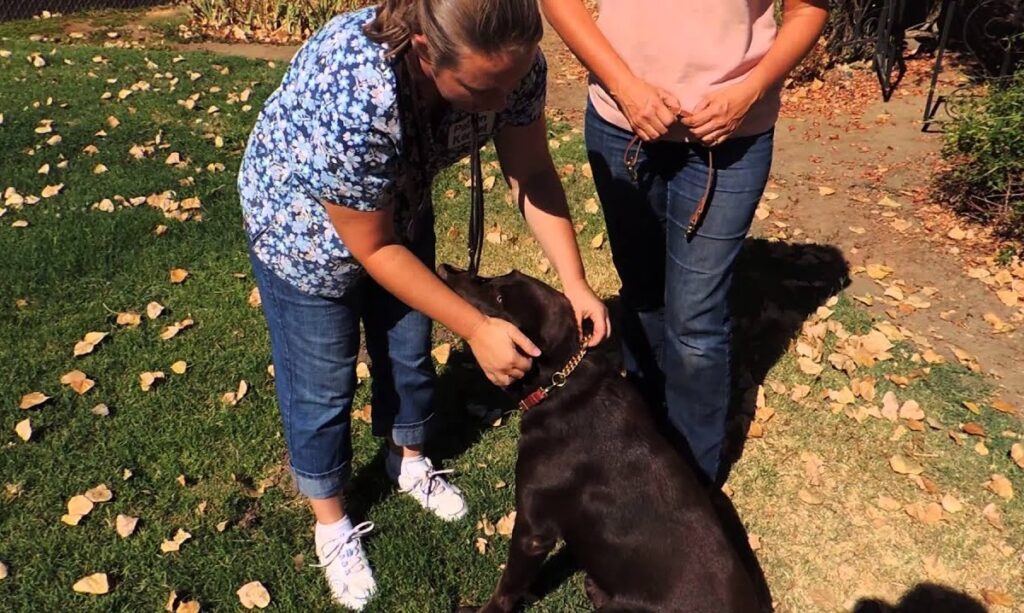
Knowing how to loosen a dog collar is beneficial to your pet’s overall health and well-being. Before you adjust the sizing, take the dog’s collar off to avoid agitating your pet or causing discomfort.
Once you’ve got the collar in hand, locate the sizing mechanism, which is usually a slider. Both nylon and martingale collars have this feature, though a nylon collar has one loop while a martingale has two.
The second loop on the martingale collar is called a control loop, which is used for sizing. This part is also the one that tightens when your pet pulls while on a leash to discourage the behavior.
How to Shorten a Dog Collar
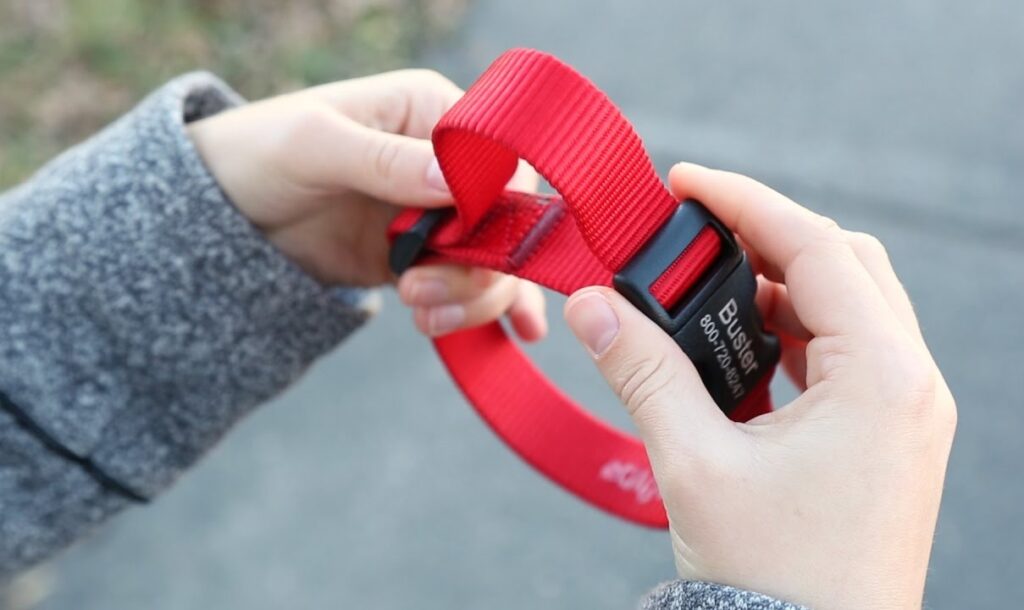
There are many reasons why pet owners might need to shorten a collar length. The most common ones are because of frayed bits or stitching coming undone or because it’s too big for your pet. You can find the easiest way to do this securely. If you can shorten the strap using the sizing mechanism, that is your best bet. Otherwise, you may have to deconstruct the collar first.
Most of the time, especially with fabric collars, you’ll need to sew them back together after shortening. This requires a strong machine and a special needle because of the material’s durability.
Important Dog Collar Features to Consider
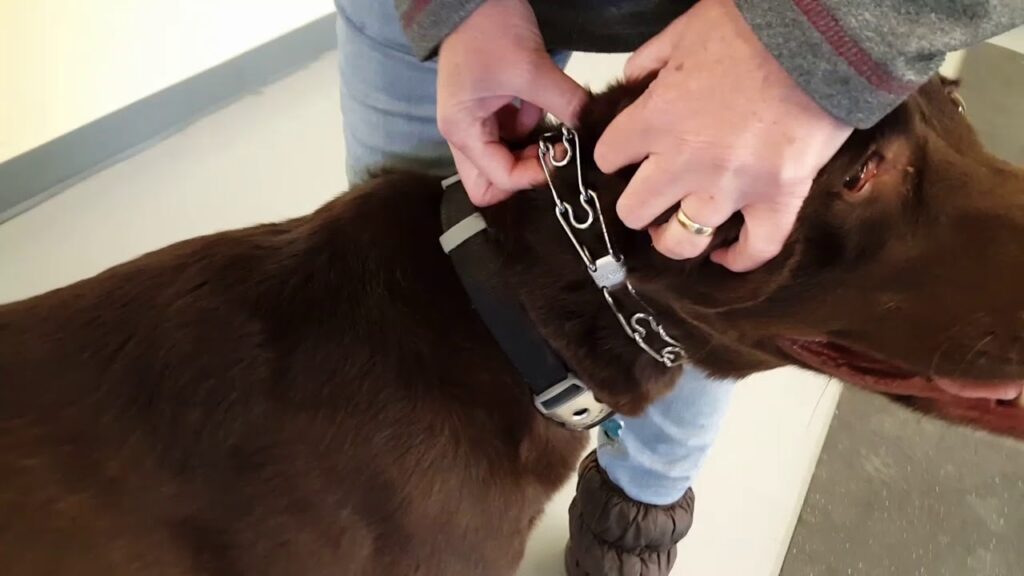
When picking out a dog collar, there are a number of features you’ll want to keep in mind. Here are some of the ones I look for when I’m shopping for Ranger’s collars.
Type of Closure
I’m all about convenience, so I tend to gravitate toward breakaway buckles and snap closures. However, there are others, including a metal buckle with a prong, quick-release tabs, hook and loop closures, and slip collars, which are typically made of chains.
D-Rings for ID Tags
Because I want my pup to make his way home should he escape from the yard, I always make sure the collars I pick out have a D-ring that I can add his ID tags to.
Material Type
I’m a stickler for nylon collars because of their durability and the wide range of colors and patterns they come in. However, leather ones are durable, too, and chain collars, while not my favorite, do have their purposes but should be used with caution.
Static Correction
Sometimes, it’s natural to want a collar that serves a dual purpose, including training your dog to be quiet. Bark collars work for this in that they offer different levels of static correction, and they work on nearly any size dog. Check out our recommendations for the best bark collar for small dogs to find your pick.
FAQ's
This is a very subjective question that depends on a variety of factors, most of which is your personal preference. You can opt for a fabric collar or a smart collar and learn about the options in our Fi vs Halo collar review, or go for one that creates a wireless dog fence system. If you don’t want to go the dog collar route, a dog harness is a suitable alternative.
First, it’s important to have the right collar size and also to make sure it can stand up to the elements your pet is in. For example, if they’re always outside, you’ll want something durable that won’t loosen if your dog snags it on something.
However, sometimes, as the collars age, the fibers break down, and they naturally loosen. In this instance, it’s best just to replace your old collar.
A nylon collar typically has a sliding mechanism, where if you feed the material through one side of the plastic or metal loop, it’ll automatically tighten.
Yes. Not in the sense that it can choke them like a collar that fits too tight, but in the sense that if they end up slipping out of the collar, they could get loose and put themselves in a potentially dangerous situation, especially if you live near busy roadways.
Additionally, a dog that gets loose can also get lost, and without a collar, there is no ID tag with information where the person who finds them can get in touch with you rather than considering them a stray or wild animal.
Yes, if the collar has a special mechanism, it will likely come with its own tool to help you avoid damage. Otherwise, most dog collars these days don’t require a special tool, but a flathead screwdriver or a pair of pliers may help move a really tight mechanism. Just make sure you take the collar off your furry friend first.
To shorten a dog collar, use a sharp knife for precise cuts. Burn holes with a soldering iron, wood burner, or electronic unit. Use a lighter to melt the cut ends of the webbing to prevent fraying.
The ideal width of a collar will depend on the size of the dog because the smaller the dog, the smaller the dog’s neck size. For toy breeds, a collar width of half-inch usually suffices, whereas extra large breeds, such as a Newfoundland or Mastiff, need up to 1.5-inch widths so the collar can stand up to the size of the dog.
Final Thought
Collars are vital for your dog’s safety, and it’s important to pick out an adjustable one. Since they come in a variety of formats, picking the best one is just a matter of personal preference. However, pay attention to your dog’s behavior for any signs that the collar may need adjusting. You want one that will fit properly for its best comfort levels.
Now you know how to adjust dog collar properly. We’ve got a lot more information on dog collars, such as our in-depth Halo collar review and what the best citronella bark collar on the market is these days.



